C2 PROJECT
The many variants of C2s built
C2 Boiler Mountings
Introduction
On top of the locomotive boiler are the chimney, the steam dome and sandbox, the turbo-generator, the safety valves and the steam manifold. There were many variations among the 5000+ locos built to this basic design, and these are considered on this page. The text focuses on chimneys but the photos have been selected to show some other boiler mounting variations which are mentioned in the captions.
The external appearance of a locomotive's chimney is a key part of its character, but the chimney internal shape is also critical to the steaming performance. Locomotive working primarily in forests are often fitted with spark arrestors to reduce the risk of starting fires. The Russian and Eastern European 28-tonne locos that were predecessors to the C2 had three different types of chimney fitted, depending on the place and date of construction. The Chinese introduced further variations, including some bizarre designs of spark arrestor.
The Standard Chimney
The standard chimney on the 28-tonne locomotive was a neat, tapered fabrication, usually with a small rim around the top. There were minor variations in the shape of the cone. Most C2s carried this chimney, as did many of their predecessors built in Hungary, Finland and Czechoslovakia and Russia.
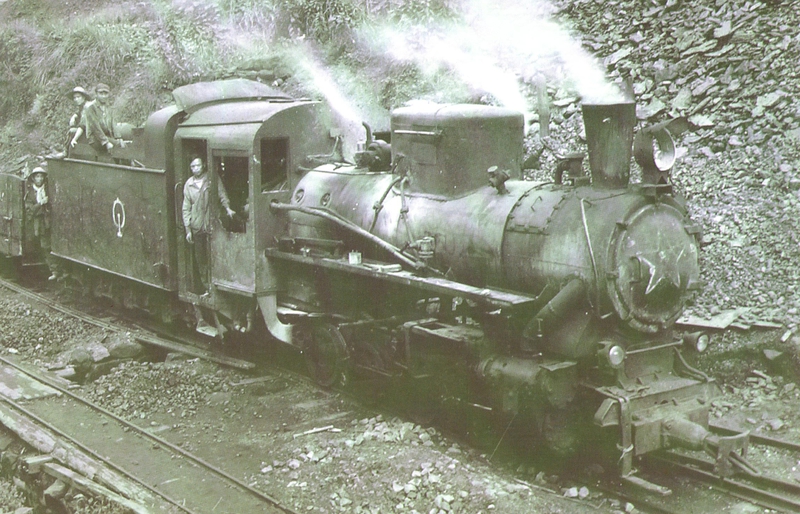
Archive photo of a 28 tonne loco at the Shibanxi line in the early 1960s with a standard chimney. Note that there is no external regulator linkage to the dome, so this loco must have an internal regulator linkage. This loco was probably built in Europe (From 'Jiayang Narrow Gauge Steam Train: A Tourist Guide for Photographers and Sightseers', ISBN 978-7-8022-0633-5)
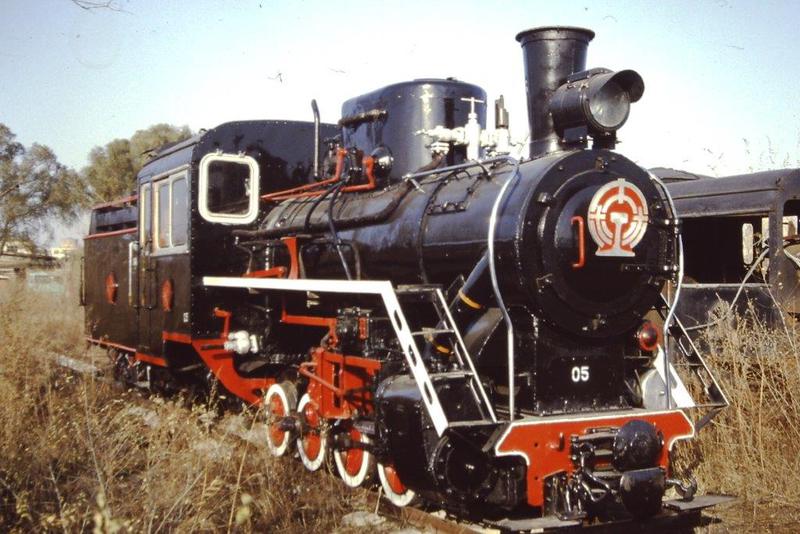
Newly-built or overhauled C2 at Harbin Works in 1987 showing the standard chimney with a more pronounced lip at the top (Photo: © Mike Jackson)
Variations on the Standard Chimney
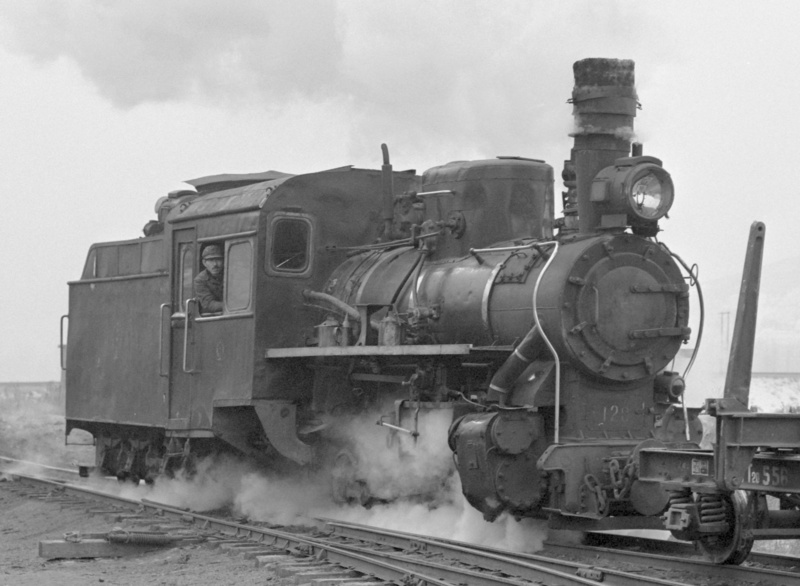
Z16-02120 at Chaihe equipped with what looks like dumpling-steaming facilities on the chimney. I guess it's really a kind of spark arrestor (Photo © Roger Gillard, cropped to show loco detail)
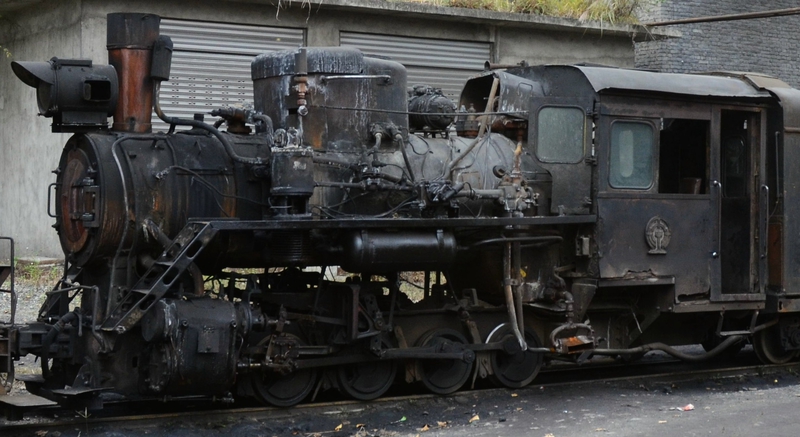
Harbin 211 at Rongshan has a parallel extension on top of its standard chimney, together with an air-pump exhaust grafted on the side. Unusually, this loco has the steam manifold mounted just outside the cab, with a profiled cover plate. This loco also has air sanders rather than gravity sanding. (Photo © Paul Molyneux-Berry)
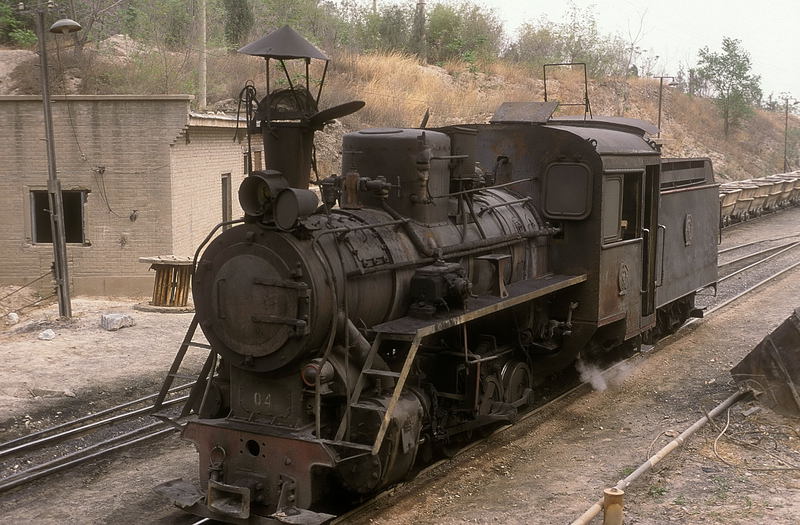
Our loco Dahuichang #4 seen in 2000, with a selection of chimney accoutrements: hinged lid, hinged 'lobster pot' spark arrestor, and a Chinese hat above them both. Note that the rear half of the dome cover has been removed and the large rectangular sandbox is fitted higher up. These modifications seem to have been unique to Dahuchang. (Photo © Werner Brutzer)
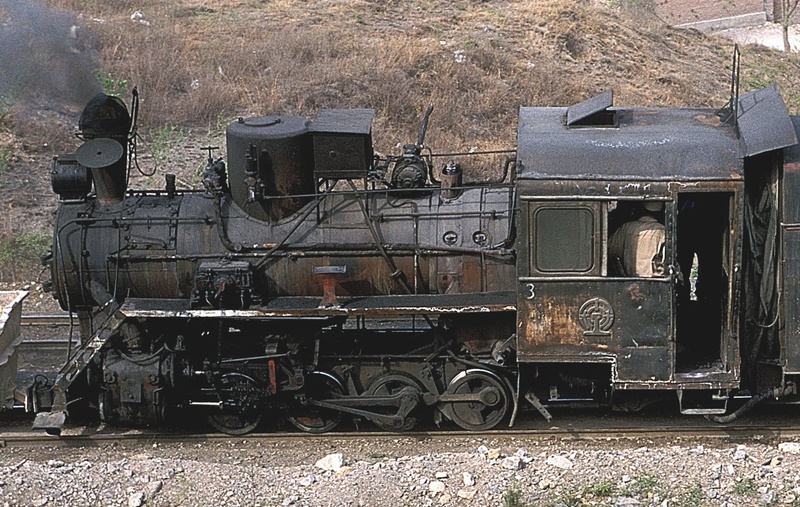
Dahuichang #3 had a neater modification to the dome cover, with a rounded rear part. This photo shows it clearly. The chimney has a lid and mesh spark arrestor but no hat at this time.(Photo © Werner Brutzer, cropped to show loco detail)
The Spark Arresting Chimney
The KP-4 drawings that we have show a spark-arresting chimney of the classic 'American' shape working on the centrifugal principle. It appears that many of the Polish KP-4s and Russian VP-1s were built with this, and some of the early Chinese locos may have followed these drawings too. The design does not seem to have lasted long in China, being replaced by the standard chimney in most places.
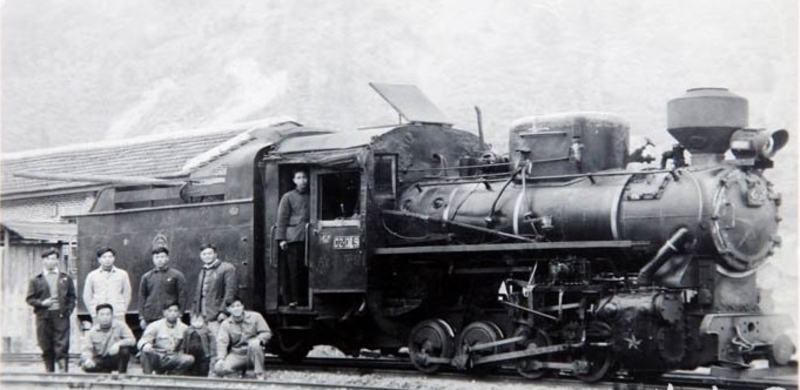
Archive photo of a C2 at the Jiangxi forestry line in the early 1960s with a spark-arresting chimney as shown in the KP-4 drawings. Judging by the position and style of the worksplates, this may be an early example from Harbin (From 'Narrow Gauge Railways of China: Guangdong, Jiangxi and Fujian Provinces' by John Athersuch, ISBN 978-1-900340-33-5)
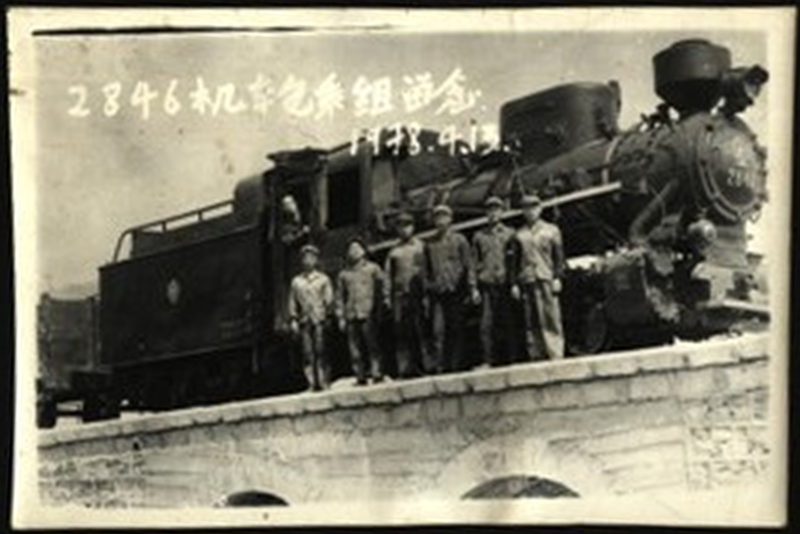
This loco at the WangDu local railway retained its spark arrestor later than some. The writing on the photo says “a souvenir [photo] of the crew of 2846, 13 April 1978â€. (from the blog of a retired steam driver: http://xi7721100.blog.163.com/blog/static/91338381201101624335730/ )
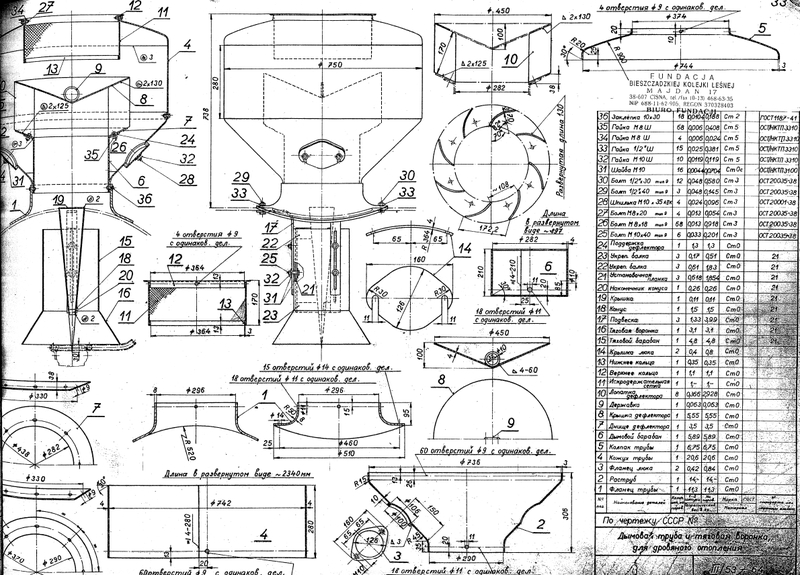
Assembly drawing of the KP-4 spark arresting chimney
The VP-4 Monstrosity
One batch of the Russian-built locos designated VP-4 carried a very ugly fabrication on top of the smokebox, with a spark arrestor mounted above. I have seen this described as a 'steam gas drier' which suggests it is a type of superheater, although its position is more typical of a feedwater heater.
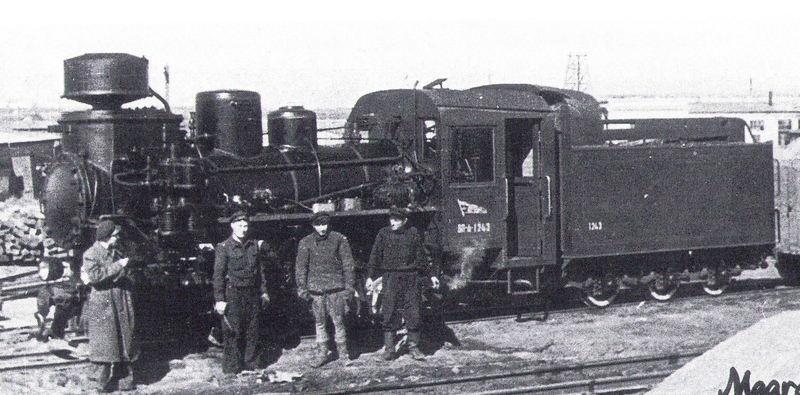
Archive photo of a Russian VP-4 with 'steam gas drier' and spark arrestor. Note also that the VP-4 featured separate casings for the steam dome and the sandbox, rather than the combined 'bathtub' used on other variants of the 28 tonne loco. (coll. Peeter Klaus, from 'East European Narrow Gauge' by Keith Chester, ISBN 1-873150-04-0)
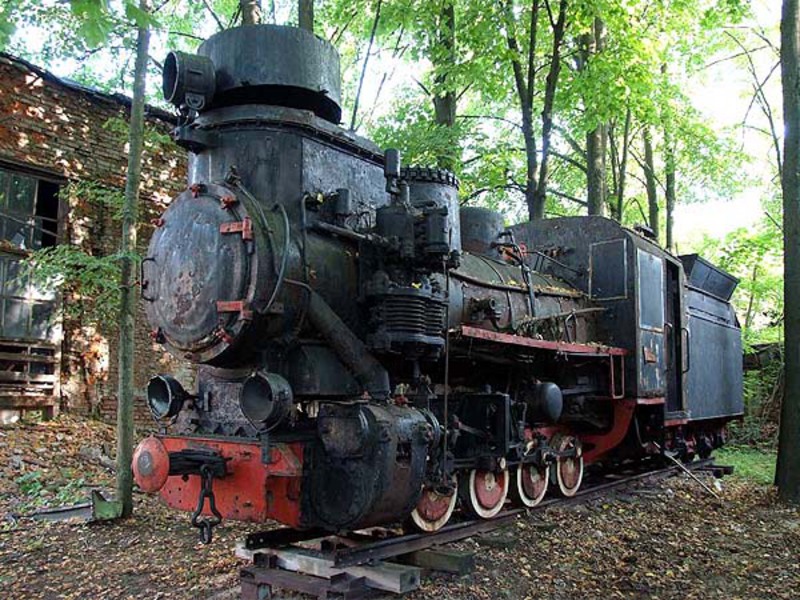
A plinthed VP-4 showing the same chimney arrangement. Three of these locos survive in Estonia and Russia but none are in working order. We do not know if any of these worked in China, but there were certainly some Russian-pattern boilers with corrugated firebox crowns in China. (Photo © Rob Dickinson)
The 'Giesl' Ejector
Several C2s were fitted with Giesl-type ejectors in China. The Giesl is a form of multi-jet exhaust that is claimed to improve draughting and steaming. Those used in China may have been unlicensed copies. Looking closely at the photos they in shape and details, as shown below.
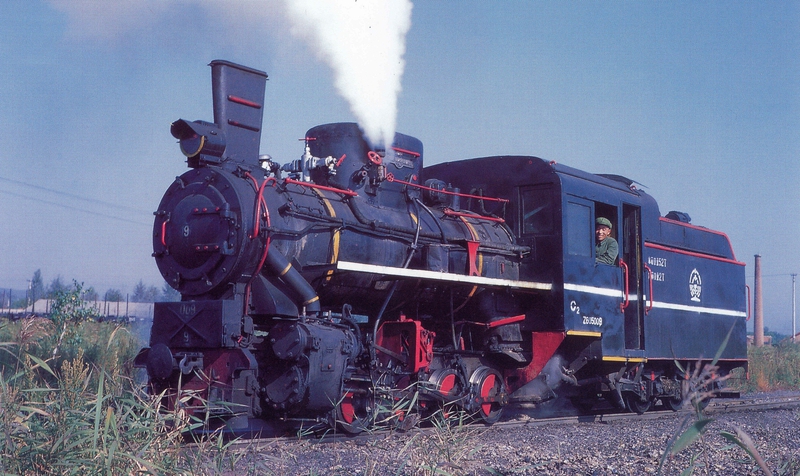
A newly-overhauled C2 with a very long and thin Giesl ejector (from 'A Picture Album of Steam Locomotives in China', ISBN 7-113-04147-7)
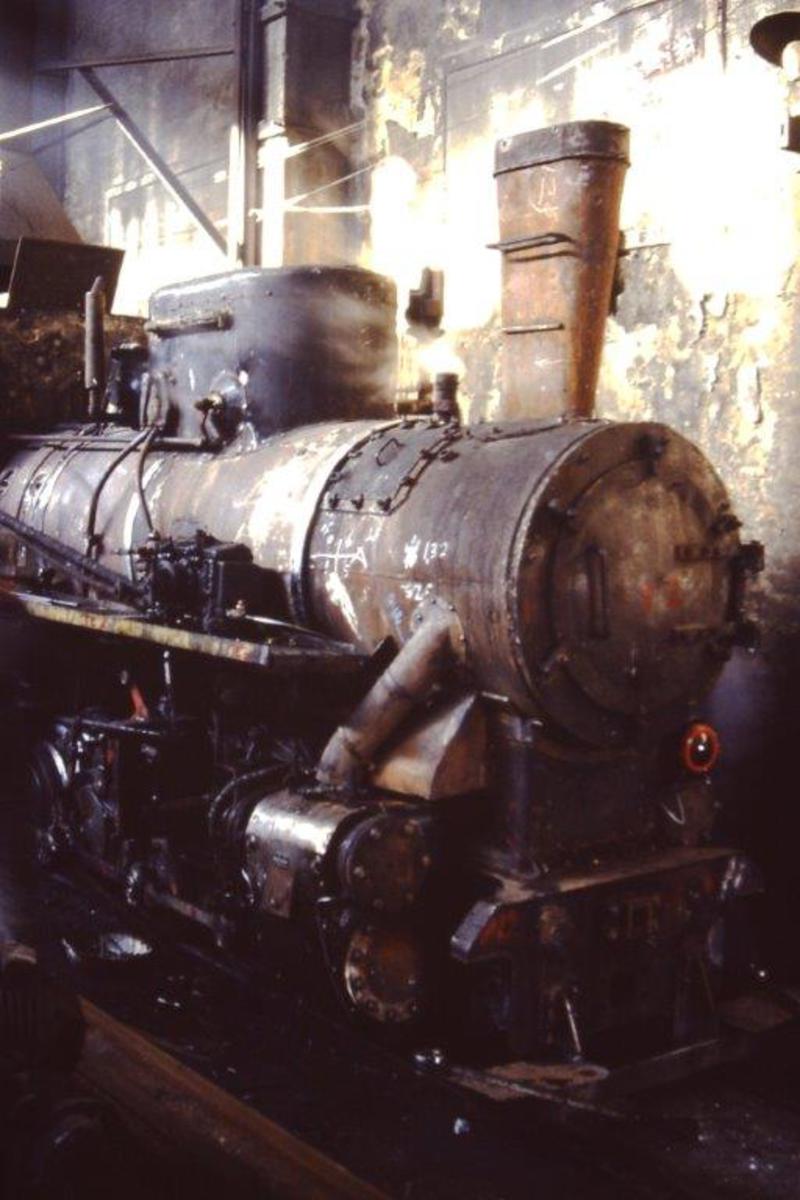
A C2 in Harbin works in 1987 with a slightly different shape of Giesl ejector (photo © Mike Jackson)
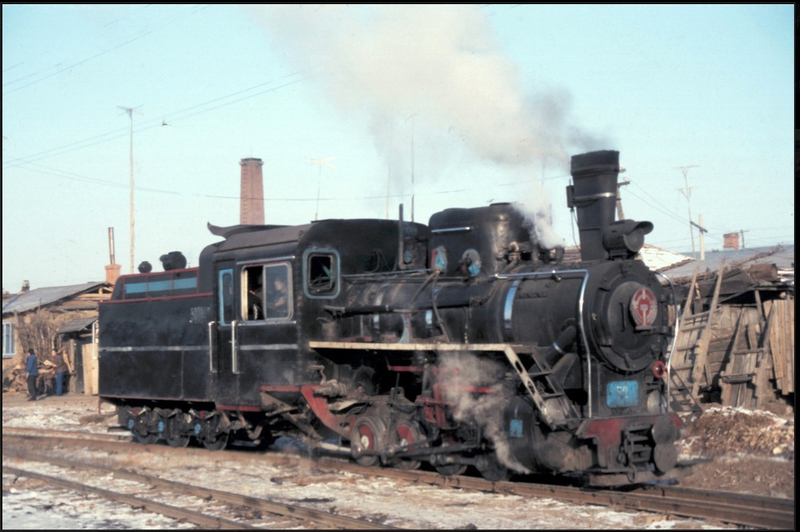
This Giesl ejector on a C2 at Tieli has a decorative chrome band and a spark arresting mesh over the top. (Photo © Mick Pope)
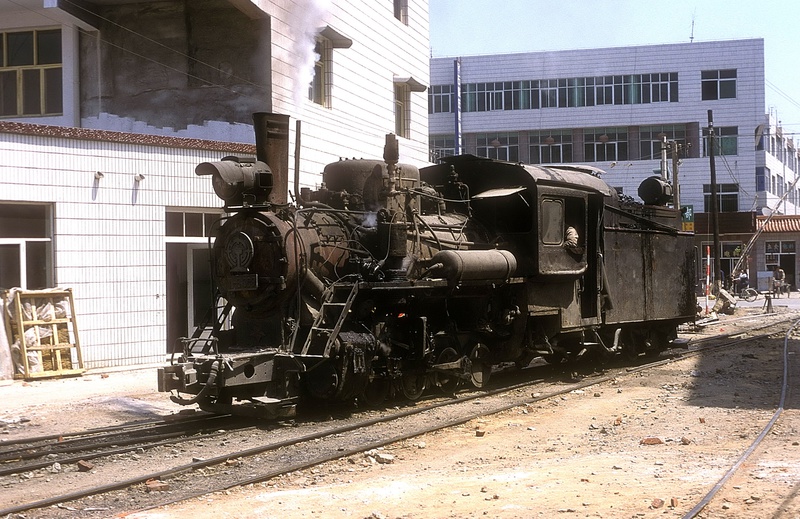
Another variant of Giesl ejector on a C2 on the WangDu Local Railway. Note also the buckeye coupling with its dragbox grafted on the front of the bufferbeam. (Photo © Werner Brutzer)
The Sanchazi 'Thing'
At the Sanchazi Forestry Railway, a peculiar form of spark arrestor was used on most locomotives. A large pipe was connected to the top of the chimney, running horizontally to the cab, where it turned upwards to exhaust.
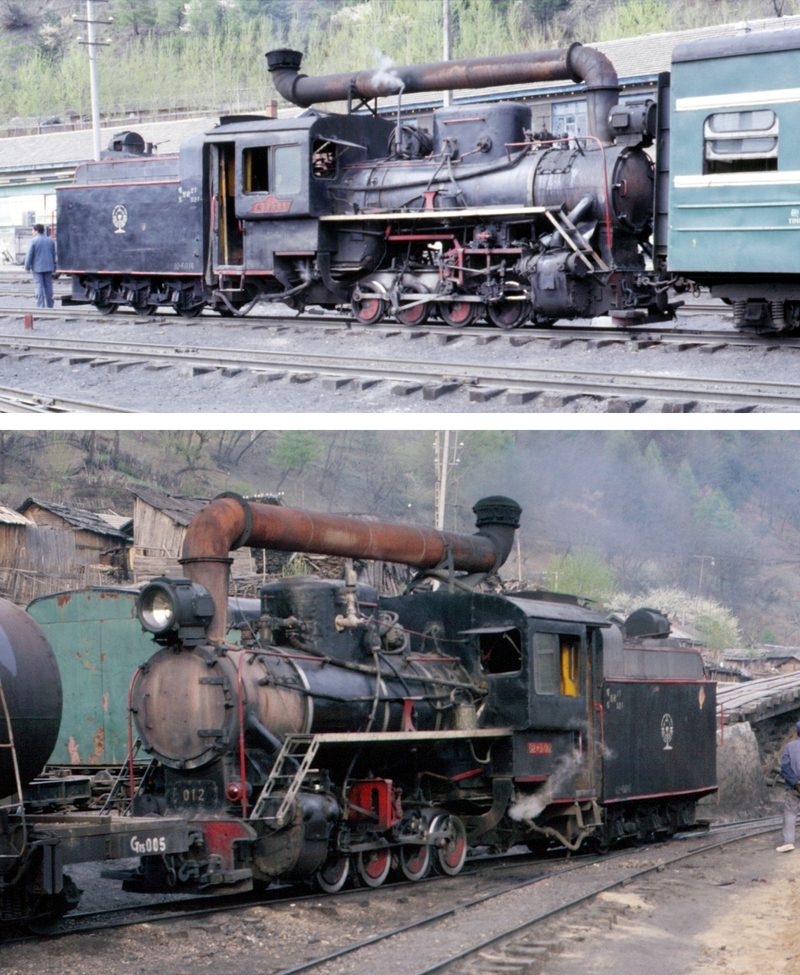
The unusual plumbing on top of the Sanchazi C2s is seen clearly in these two photos (Photo © B Whetham, colln Rob Dickinson)
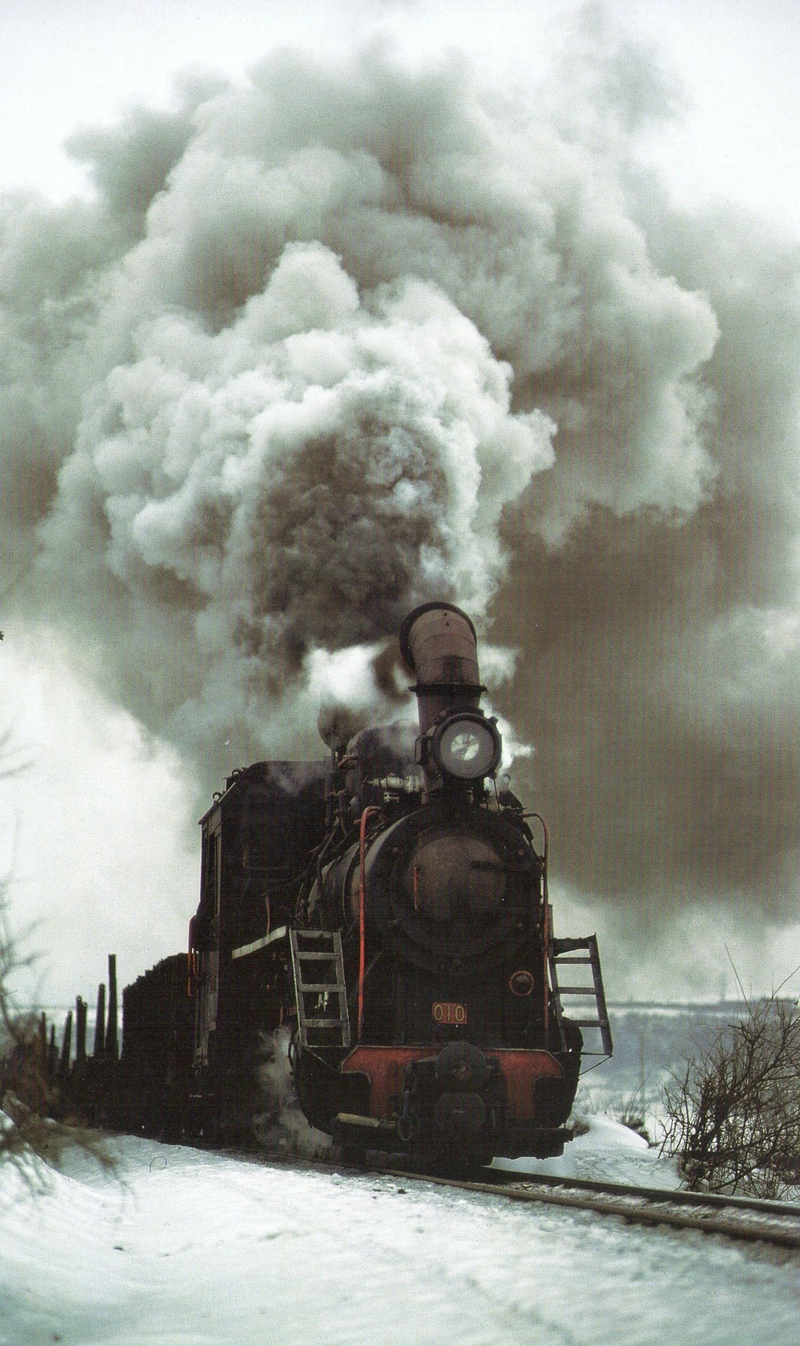
Another C2 at Sanchazi, working hard (from 'Steam on 4 Continents' Part IV by G.Haslbeck & D. Wardale, ISBN 3-925314-03-2)
The Pengzhou Cast Chimney
Some of the 28-tonne locos at Pengzhou sported a chunky parallel-sided chimney, which they retained after transfer to the Jiayang Coal Railway (Shibanxi). This chimney appears to be a casting, whereas all other C2 chimneys are fabricated. These locos had been rebuilt (possibly built) at a works in Chengdu, and had several other unusual features including an extended frame at the front.
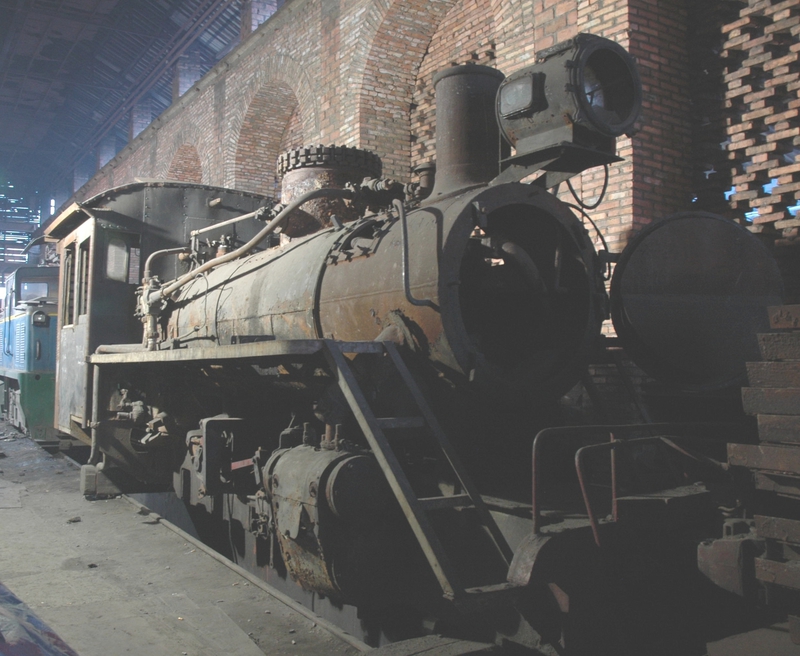
Pengzhou ZM16-4 72 awaiting rebuilding at Shixi works, showing the cast parallel chimney (Photo © Paul Molyneux-Berry)
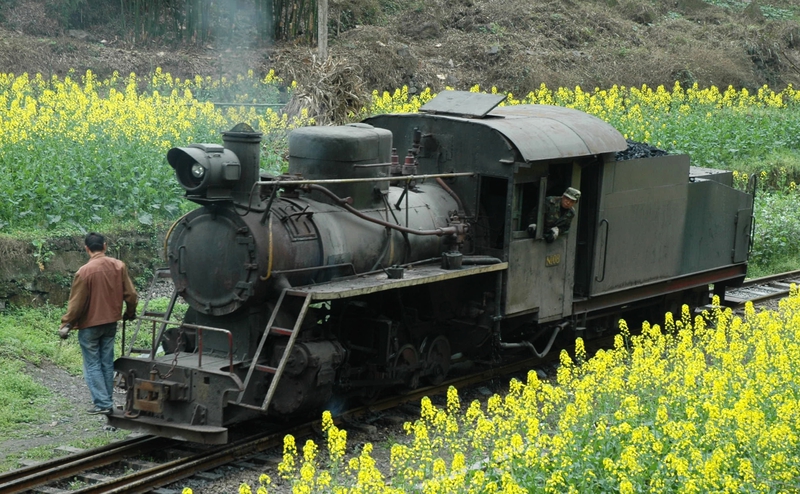
Shibanxi #8, another ex-Pengzhou loco, showing the cast parallel chimney. Note also the loco frame extension. (Photo © Paul Molyneux-Berry)
A surprise at the other end of the boiler
And finally, something unusual on a locomotive boiler, though occasionally seen on traction engines. The Russian class VP-2 was nearly identical to the KP-4 and C2, but featured a corrugated firebox crown instead of a conventional flat crown with stays. This pair of abandoned boilers at Huangjinggou in 2007 are of this type, and may have originated in Russia.
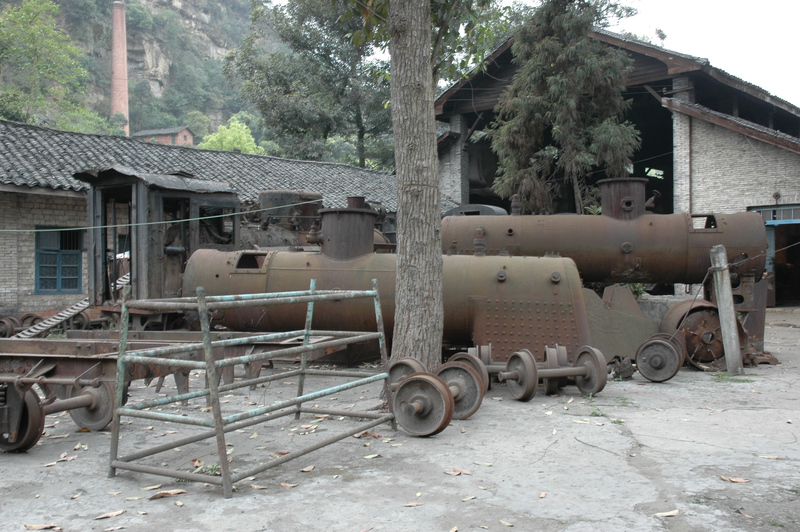
C2 boilers with corrugated crown fireboxes at Huangjinggou in 2007. The absence of stay heads over the top of the firebox is noticeable. (Photo © Paul Molyneux-Berry)
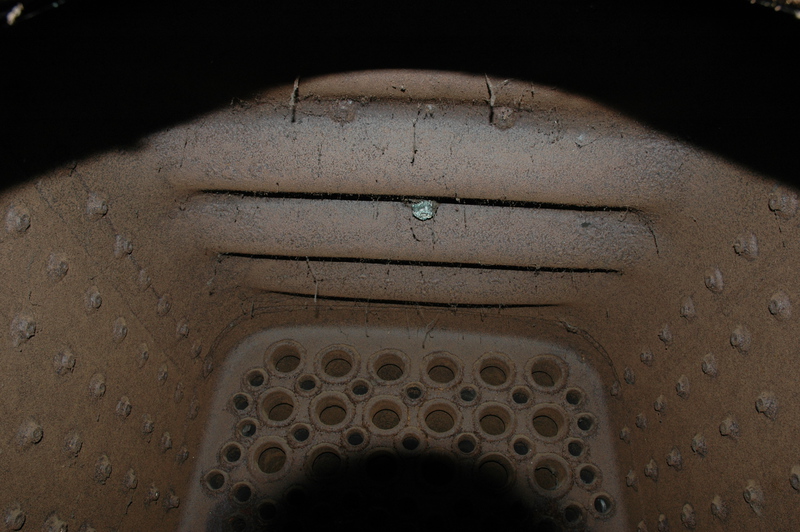
And a peek through the firehole door to see the corrugations. (Photo © Paul Molyneux-Berry)